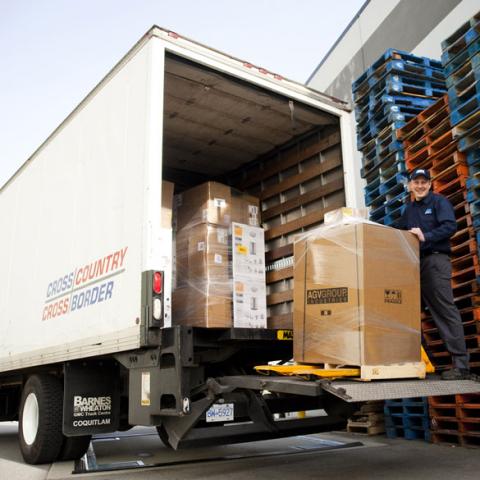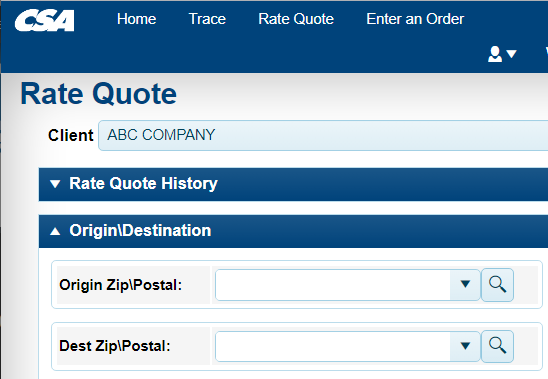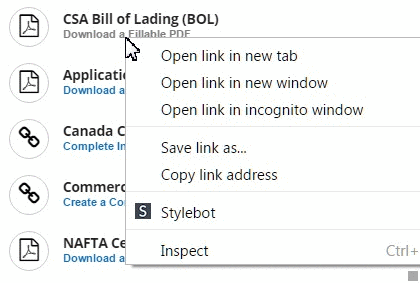Shipping Boxes from Ontario across Canada: What You Need to Know
Shipping boxes within Canada can be challenging if you don't know where to start. Finding reliable carriers is important. Managing costs is key. Safe delivery matters too. One efficient method is using LTL shipping where you can stack (and shrink wrap) multiple boxes onto a single pallet and then share space in the truck with other shippers.
This reduces costs. LTL shipping works for both large and small shipments. It's ideal for businesses and individuals. We'll cover how to ship boxes across from your location in Ontario throughout Canada. The process will be smooth with the right approach.
Key Factors in Shipping Boxes Across Canada
How Shipping Costs are Calculated
Shipping costs are based on several factors. The size and weight of the box are the most important. Larger and heavier boxes cost more. Distance also affects the price. Longer trips tend to be more expensive. The shipping method matters too. Express services cost more than standard ones.
Additional services like insurance and tracking can add to the cost. The season also plays a role. Busy times, like holidays, can lead to higher rates. Be sure to check if any extra fees apply. All of these factors are combined to determine the final shipping cost.
Types of Shipping Services Available
There are several types of shipping services. Ground shipping is the most common. It is often the cheapest and most reliable option. Air freight is faster but more expensive. LTL (Less-than-Truckload) shipping works for smaller loads. It shares space with other shipments, lowering costs.
Full Truckload (FTL) shipping is for larger shipments. It uses an entire truck for one customer. Each service has its benefits, depending on the size, speed, and cost you need. Choosing the right one can save you money and time.
Choosing the Right LTL Shipping Carrier for Your Boxes
National vs. Regional Carriers
National carriers like CSA Transportation in Vancouver, BC and it's network of other distribution centers, serve all of Canada. They cover large areas and offer many services. These carriers are great for long-distance or cross-country shipping. They can handle large volumes and usually have multiple distribution terminals.
Regional carriers, focus on specific areas—often a better fit for destinations outside major metros—but they don’t reach as many locations. Choosing between national and regional options depends on shipment size and destination. For long hauls to major cities, national carriers may be best; for local or niche markets, regional carriers often fit better. Carriers like CSA Transportation combine national coverage with regional experts—supporting 33,000 lane combinations across Canada and the U.S. through a 15-terminal network that reaches about 90% of postal/ZIP codes. Across the CSA network—whether you need a trucking service in Edmonton, AB or a trucking service in Calgary, AB—you get local route optimization and a real person who knows the area.
Evaluating Carrier Reliability and Delivery Time
Reliability is key when choosing a carrier. Check the carrier's track record for claim free deliveries. If your shipment is urgent, go for a carrier with same day pickups and daily departures. Delivery times are pretty consistent with LTL shipping especially with carriers that have a terminal network. Delivery across Canada is also highly weather dependent especially in winter.
Look at customer reviews to gauge reliability. Always check for delays or hidden fees that could affect your timeline.
Understanding Different Shipping Options for Boxes
LTL Shipping for Small and Large Shipments
LTL (Less-than-Truckload) shipping works well for small and large shipments. It allows you to share truck space with other customers, reducing the cost. This option is ideal when you don't have enough goods to fill a whole truck. LTL is a more affordable choice compared to Full Truckload (FTL) shipping.
However, LTL may take a little longer due to multiple stops. This method is flexible, making it perfect for businesses and individuals with smaller shipments. It's a reliable and cost-effective way to ship goods across Canada without incurring costs for unused truck space.
Consolidating Multiple Boxes on a Pallet
If you're shipping more than one box, consider combining them on a pallet. Palletizing helps in three major ways:
Benefits of Palletizing
- Lower costs – Carriers often charge less for a single palletized shipment than for multiple loose boxes, especially with LTL shipping.
- Better protection – Pallets keep boxes together, making them easier to handle with forklifts and less likely to get lost or damaged.
- Faster handling – Palletized shipments move through carrier facilities more quickly because they require fewer touchpoints.
When stacking boxes on a pallet:
- Place heavier boxes at the bottom and lighter ones on top.
- Use stretch wrap or shrink wrap to secure the boxes tightly to the pallet.
- Avoid overhanging edges and keep all boxes within the pallet footprint to prevent damage during transit.
- Add corner protectors or strapping for extra stability.
For fragile or high-value goods, you can also use a crate over the pallet for even more protection. This is especially useful for long-distance or high-volume shipping across Canada.
Full Truckload vs. LTL Shipping
Full Truckload (FTL) shipping uses an entire truck for a single shipment. It's faster because the truck only makes one stop. This method is ideal for large shipments that require prompt delivery. FTL is more expensive than LTL, as you pay for the entire truck, even if it's not full.
LTL shares truck space with other shipments, making it a cheaper option, but it takes longer. The decision between FTL and LTL depends on shipment size, delivery speed, and your budget.
Preparing Your Boxes for Shipping
Packaging Tips for Safe Deliveries
Use sturdy boxes to protect your items during shipping. The box should be the right size for your items. Don't leave too much empty space inside. Fill any gaps with bubble wrap, foam peanuts, or crumpled paper. Seal the box tightly with strong tape.
Label the box clearly. For fragile items, mark the box as "Fragile." If your items are heavy or valuable, double box them. This extra protection will reduce the chance of damage. Proper packaging helps prevent delays and damage during transit.
Labelling and Documentation Requirements
Label the box with the sender's and recipient's full addresses. Make the address legible and accurate. For international shipping, include customs forms. These forms list the contents and value of your items. Some shipments may require specific instructions, such as "Handle with Care."
A packing list should be included if necessary. This helps carriers manage your shipment properly. Double-check that all documents are attached. Confirm everything is visible and clear to avoid delays. Proper labelling and documentation will make the shipping process easier and faster.
Costs and Delivery Times for Shipping Across Canada from Ontario
How Delivery Times Vary Across Canada
Delivery times vary based on distance. Shipping within one province is faster than shipping across the country. For example, a shipment from Ontario to Quebec will take less time than one from Ontario to British Columbia. The further the distance, the longer the delivery time. Weather can also affect delivery times, especially in winter.
Remote areas might have longer delivery times due to fewer available routes. Express services speed up delivery but cost more. Standard services are slower but cheaper. Delivery time also depends on the shipping carrier and method you choose.
Understanding Additional Fees in Shipping Costs
Shipping costs include more than just the base price. Some carriers charge extra for special services, such as insurance or tracking. Fees for fuel surcharges can apply, especially if oil prices are high. If your shipment is oversized or overweight, extra charges may apply. Some carriers charge a handling fee for fragile or special items.
If you're shipping internationally, customs fees are added. These fees depend on the value and nature of your shipment. Always ask for a breakdown of costs to avoid surprises when you check out.
Get Reliable and Affordable Shipping with CSA Transportation
Shipping boxes from Ontario across Canada doesn't have to be stressful. Our GTA terminal located at 355 Horner Avenue, Etobicoke, ON, M8W 1Z7, CSA Transportation offers efficient and affordable LTL shipping options for both small and large shipments.
Why Choose CSA Transportation
We make sure your palletized boxes arrive on time and in excellent condition, no matter where in Canada they're headed. Our team takes care of all the logistics so you can focus on your business. Need help with shipping? CSA Transportation can help you choose the best option for your needs.
Ready to Ship?
Call (416) 754-0999 Today!









